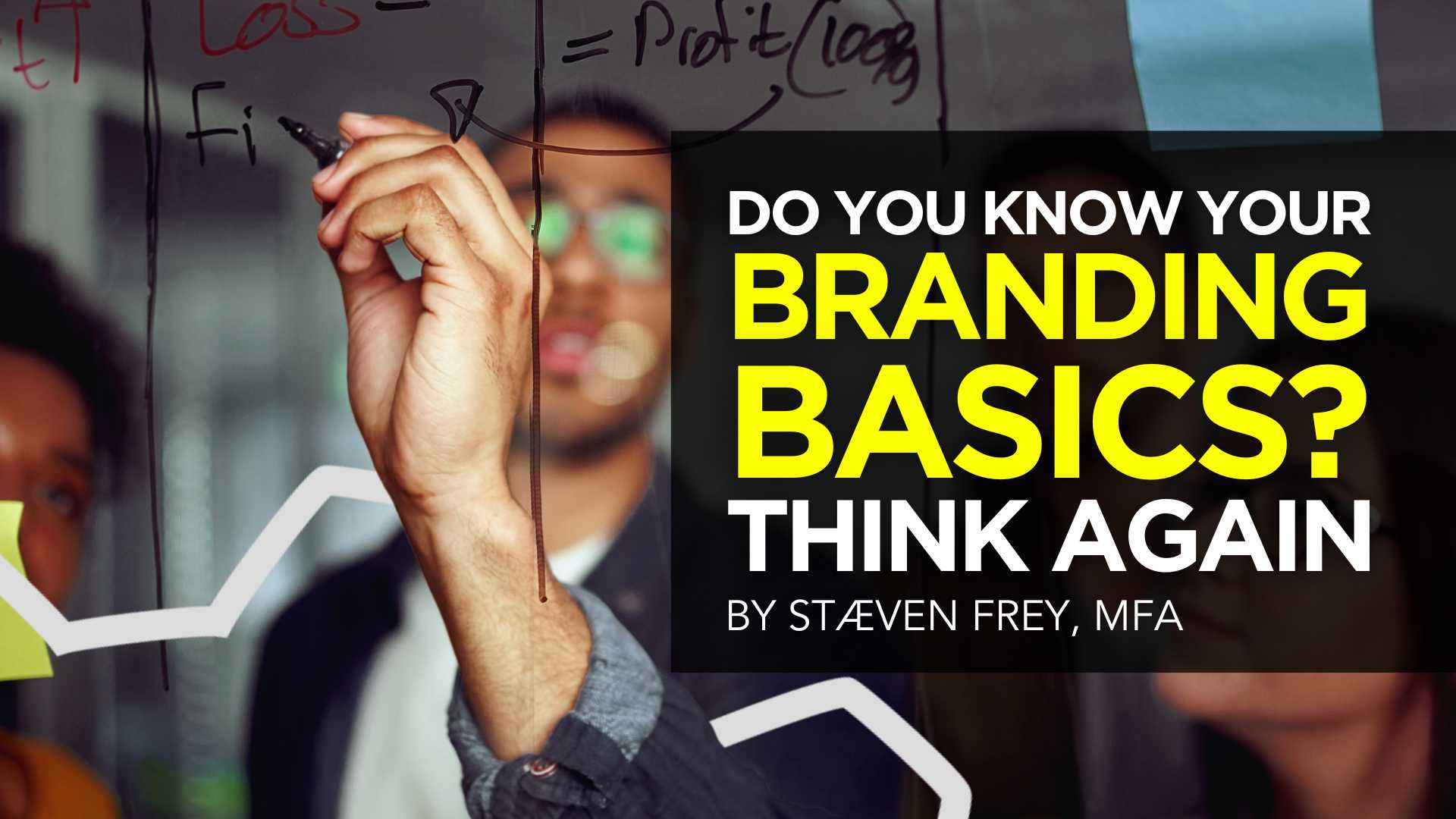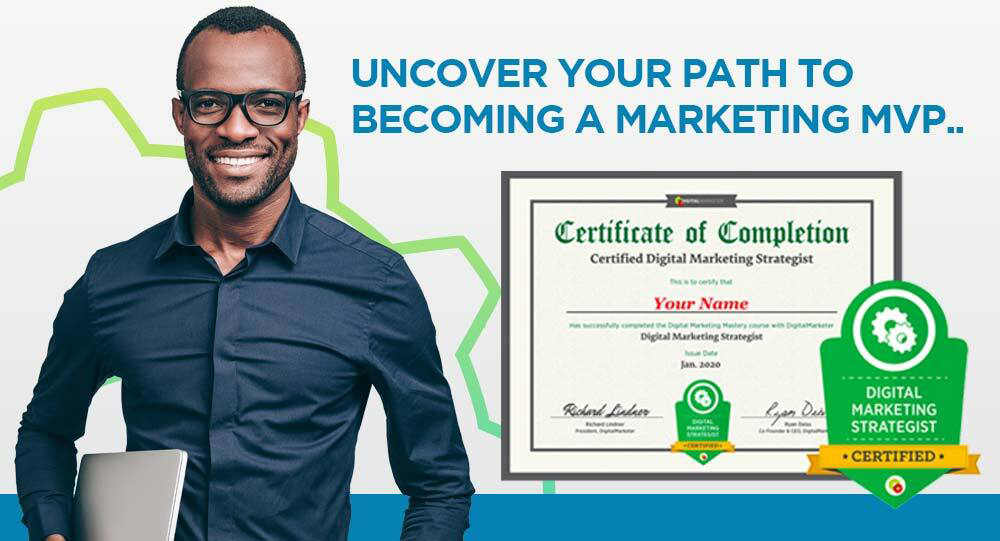MARKETING
Do You Know Your Branding Basics? Think Again

There is no topic in business and marketing bigger than the topic branding.
When you Google the term “why is branding important,” you’ll find an abundance of resources that stress the importance of understanding and investing in branding for your success. In the majority of these resources, there are also vague references to terms like brand value, brand equity, and consumers’ minds and hearts.
You’ll find the topic seems to somehow encompass everything from mission, vision, and values, to colors, fonts, and messaging. The topic somehow does everything, doesn’t it?
As you continue to investigate, you’ll discover that Investing in branding really matters. In today’s digital, post-covid marketplace, brand leaders all seem to know that harnessing the power of world-class branding is critical for success. But how?
Every day you can read stories about the missteps of recent brands like Twitter, who under the leadership of an unguided leader, unhinge years of brand equity, meaning, and value, completely missing the customers they exist to serve. Twitter’s brand was so engrained into culture that even the word “tweet” was added to the dictionary. We immediately know the missteps of bad branding when we see it, don’t we?

I’ve seen firsthand and can attest to branding’s power, personally and professionally, for both good and bad. Working as a Brand Scientist, I’ve had the opportunity to work with over 150 major brands in 65+ categories, putting 500+ SKUS into the marketplace, and collaborating with small startups from $30K to $30B bluechip companies. It’s one of the things I’m most passionate about, love discussing, and love sharing knowledge on.
While most marketers will tell you that branding is important, only a few know why.
For the customer, branding is a tool that helps them navigate choices in the category, create perceptions, and influence behavior.
As a company, there’s nothing more important than influencing behavior to drive sales, and branding does exactly that.
Branding ultimately makes it easier to sell, easier to buy, and easier to build brand equity in your category.
Yet, who is branding for, and when do you do it?
Branding is for Everyone
It doesn’t matter what age and stage your business is either. Whether you’re a—
- a founder with an idea, trying to get a proof-of-concept and raise capital
- a nascent and budding brand launching into the marketplace
- a pubescent growing brand launching new products and trying to get category growth
- a middle-aged, established brand constantly working to scale and become an authority or
- a declining legacy brand trying to stay relevant, redefine its mission, and stay in the game and need to pivot quickly,
There’s nothing more critical to the success of your business than strong branding that connects with your consumer, helps deliver the product/service experience, and creates a relationship.
Wow. This topic somehow does everything, doesn’t it?
The Dark Side of Branding

But guess what—there’s a dark side to branding too. Maybe you’re familiar.
While the topics of branding and everything it contains feels shiny, beautiful, and lucrative, there’s nothing quite as subjective, nebulous, and frustrating as branding.
To quote the kids at the end of each episode of Reading Rainbow, ” –”Don’t take my word for it.” 🎶 bah dum bum 🎶
Here are a few people we could ask more about this.
Here are a Few People We Could Ask
If you’re curious about the dark side of branding, just ask CMOs, agency leaders, and business owners about their experiences with the process and why it’s lost its lackluster.
Ask the CEOs and CMOs about their experience and the daunting task of rebranding. They would tell us about the difficulty in trying to communicate with senior-level stakeholders, internal teams, and customers while managing everyone’s voices being heard. They’d share about the incredible efforts it takes, the pressure it creates, and the expectations of getting it right. How long is that supposed to take? One month? One year? How do you get it right?
Ask the Agency Leaders
We could ask agency leaders when they’re faced with the task of educating and selling branding packages to their clients. They would tell us about the challenges of trying to communicate the need for effective branding to their clients. They also share how they struggle to get clients to pay a premium price for the service and how much the customer struggles to even understand.
They’d tell us about how they cringe and never want to put the clients’ ugly brandmark on the slick, new, beautifully-responsive, cutting-edge website. They could share with us how the client wants the old branding with the new website and doesn’t see any disparity between the two. What do you do?
Ask the Business Owners
We could also ask small business owners who are trying to navigate their marketing when faced with the task of brand/rebrand. Ask them about the three wildly different quotes with three extreme price points from three completely different perspectives from three completely different agencies.
They’d tell us that when talking to marketing agencies, they get several proposals ranging anywhere from $2500 to $25,000 and beyond, feeling unjustified and dishonest. They would share with us how It feels unsettling, frustrating, and slightly deceptive, but they’d also tell you they often pick the middle package.
Aren’t they supposed to be comparing apples to apples? If so, then why such a price difference? And why such a difference in approach? Why don’t branding proposals ever feel remotely similar? What’s that all about?
Ask the Rest of the Us
Lastly, ask those of us who have hired agencies to create a marketing plan for us. We’d tell you about how the agencies return to create a brand style guide and provide services that weren’t what you signed up for.
We could discuss the horrible taste left in our mouths by the majority of professional fellow marketers and their branding process in general.
What’s Happening Here?
It seems like there’s a breakdown happening.
Our professional definitions aren’t the same, and it shows.
We would all agree there tends to be an incredible disagreement among professionals on the definitions, the quality, and the execution of branding. Not only are our definitions of branding vastly different, but our levels of understanding, meaning, and expertise are all at different levels. This certainly doesn’t help.
We would all agree there tends to be an incredible disagreement among professionals on the definitions, the quality, and the execution of branding.
Not only are our definitions of branding vastly different, but our levels of understanding, meaning, and expertise are all at different levels. This certainly doesn’t help.
Although marketing professionals out there are trying to do a good job, these definitions are simply not good enough. Just look at the results. Maybe you identify with one of these people above? What frustrations have you had?
Branding. What is it Then?
Branding is kind of like love.
Just track with me for a minute…
We know it’s important, and we want to see it flourish everywhere, but when it comes down to it, no one ever has offered a set definitive standard on what “it” (love) actually is.
To quote bell hooks, “ Everywhere we learn that love is important, and yet we [get] bombarded by its failure.” Similarly, I’d modify the quote to say that “everywhere we learn that [branding] is important, but we get bombarded by its failure.”
The examples about the dark side of branding summarize a snapshot of the hundreds of stories I’ve heard over the years. Every day I hear hurt business owners, frustrated marketing practitioners, and disheveled agency leaders who are furious with their experience with branding, where it’s gone wrong, and where it’s missed its proverbial mark.
Furious at the experiences with those who are performing it. Furious with the results later that don’t measure up nor create the intended results.
You better believe it puts a lot of pressure on the next guy to come along. That’s usually me.
Even if that’s not been you, we both can agree we’ve seen some pretty bad branding out there. Stuff that completely misses the assignment. We KNOW it’s supposed to be good, but it doesn’t measure up.
Yet, when it’s good branding, do we notice it? How do you know? How can you break down the formula to emulate?
We’d like to think we do. Perhaps that’s the secret? Is good branding truly invisible?
Bad Branding is Everywhere.

Like the adage, ” Bad design is everywhere, good design is invisible.”
“While we know good branding is important, no one can seem to agree why. If we could all agree on what good branding is, we’d all have it, right?”
While we know good branding is important, no one can seem to agree why. If we could all agree on what good branding is, we’d all have it, right? If this was true, we wouldn’t be taking the latest workshops, reading the latest books, and fervently trying to apply frameworks to our marketing ecosystem again and again, would we?
Modern Snake Oil
I’m not alone in this either.
Please say you know what I’m talking about.
The latest New York Times best-selling author gone marketing guru comes along, you get on their list, you attend a webinar, you get their book, buy their course, and maybe even go to their workshop.
You think “This is the one.”
You spend countless hours and dollars are spent overhauling your marketing.
You simplify and re-teaching your teams the mantras, and the new philosophies:
“The way of the purple cow, the immutable laws, the hero framework, the simplified message, the passion conversation, the 6 keys, the decoded message…” They go on and on.
Then what happens? It seems to be working.
Or it seems to.
Everyone gets excited. We have forward momentum. The team gets excited, our marketing has clarity, and it seems like everything is moving forward. This is what we needed, surely.
What are We Getting?
It works OK for a while. But then technology, the economy, the customer, or the market changes, and it all falls apart. Then back to square one.
But, like the weight-loss programs or Sex Panther cologne, the results aren’t typical. 20% of the time, it works every time.
Akin to the Emperor’s New Clothes, you wind up with a solution that’s not based on your business. You wind up with one of a few things:
- Something based on trends—what is hot right now, someone’s opinion of clever, sharp, and “now.” Everyone else is doing it?
- Something based on their “experience”—how could they be wrong? They’ve been doing this for a long time? They must be right!
- Something based on personal choice. Whether it’s your choice, the designers, or the client’s (e.g. “I like blue, I hate circles”), the preferences are subjective. They’re also not based on your business. What could go wrong?
- Something that’s a combination of the three. That’s a recipe for disaster.
Most professionals walk away from this experience, wondering, “Maybe it was just me.”
“Maybe I didn’t try hard enough.”
Maybe we didn’t “implement the hero’s journey framework into the archetype correctly,” and “simplify the avatar enough based on the messaging model.” The cow needed to be more violet.
Let’s Ask One More Person to Ask About the Dark Side of Branding

There’s one last person we need to ask about the Dark Side of Branding.
Maybe this is you. Let’s ask all those left behind in its wake.
Let’s ask the workshop-attending, course-purchasing, guru-following students of the modern, digital age
I would ask these marketers about the workshops they’ve attended, the conference tickets they’ve purchased, the masterminds they’ve joined, and how many different frameworks they’ve learned over the years. I’d ask about the tools they’ve had to implement into their marketing system. The constant up and down of the team morale, and the constant pressure of asking internally “Am I doing this right?”
Then, like the ADHD squirrel-loving, marketing addicts we all are, we move on to the new, the newer, the newest, marketing framework. The shiny, Shinier, SHINIEST, thinking, “This must work, it’s new—it’s cutting edge, right?”Man, belief sure does outweigh truth sometimes. Why is that?
Stop Learning from the Back of the Bus

As a kid in middle school, the back of the bus was where the cool kids sat. They had a palpable authority that drew you towards them. You coveted them. These kids were cool and we wanted to know what they had to say. More importantly, we wanted to belong and be PART OF THE CONVERSATION, part of the club. We simply wanted to be around them, learn from them or even become cool, if only via proxy.
The back of the bus is one of life’s first media platforms, the original social network. This is where you learned about the birds and the bees, cuss words, and other things that adults didn’t tell you (or so we believed). All the things you probably got in trouble for as a kid could be traced back to the influence of the back of the bus.
For some reason, no one taught us about these topics directly in an age-appropriate, authoritative way. If they did, it was tossing you the Children’s Encyclopedia Brittanica—which was not very approachable either.
“When it comes to learning about branding, it seems like we’ve all been learning from the “back of the bus.”
When it comes to learning about branding, it seems like we’ve all been learning from the “back of the bus.”
I don’t know about you, but I’m tired of the infomercial-style marketing gurus out there making a buck and not having any skin in the game on my behalf. They’re the cool kids on the bus for sure, but not there when we get in trouble either.
When your business is on the line, where are those experts?
Nowhere. Not in your dugout.
They’re not in the trenches of your business, that’s for sure. Instead, they’re teaching everyone else their framework—which THEY made up. Of course, they’re doing the best they know how, but still aren’t very authoritative. It only was because you thought it was, putting all your eggs in someone else’s basket.So we know good branding is important, but no one can seem to agree. Which brings us to a really big question. What is good branding?
So What is Good Branding?

Don’t you wish there was a science to the madness?
Don’t you wish there was something authoritative, true, and foolproof?
Something that you can count on, can measure, analyze, and know for certain?
I’d like to offer you a hopeful reprieve from the constant madness.
THERE IS.
As a Brand Scientist at Quantum—an evidence-based Branding Agency based in Nashville, Tennessee, I spend my days working on the science of what makes effective branding as effective as possible. Similar to a coffee master or sommelier, I’m a resident expert for brands on their branding using science as the lens for growth.
I do this by breaking apart, analyzing, critiquing, and helping build better brands through a proven process based on science.
It’s my job to help brands diagnose, assess, and create the most effective branding possible. I use the evidence-based metrics of scientific areas of study. I call this BrandScience™ — the proven science of how brands grow and sell.
When I recently appeared on the DigitalMarketer podcast with Mark deGrasse, he asked me to come back and record a follow-up episode. He also asked if I’d be willing to share my empirical view of what branding is with the DigitalMarketer community. In doing so, start a dialogue of how we each can make our areas of marketing most effective.
Why Does BrandScience Matter?

There are so many types of marketing out there. Digital, social media, content, e-commerce, email, paid traffic, paid search, analytics and data, optimization and testing, copywriting, or community just to name a few.
“Regardless of the marketing you do, one constant thread binds all these forms of marketing. These marketing activities are only as successful as their implementation of branding within them.”
Regardless of the marketing you do, one constant thread binds all these forms of marketing. These marketing activities are only as successful as their implementation of branding within them.
This means, if your branding isn’t of superior quality, no amount of marketing efforts can help It.
Most of us know that we must deploy effective branding, but how? We think we know the why: To make our companies grow, drive profits, and help make sales, right?
What if that’s the wrong answer? What if—by not knowing what you don’t know— you’re missing incredible, low-risk opportunities to help your brand grow?
What if you could get where you want faster than you are now?
I’m excited to share my knowledge of the science of branding in a series of articles with you. It’s my goal to help you understand the impact effective branding can have. Most importantly, I want you to get further, faster.
- What if you could get to where you dreamed about sooner?
- What if you launched that new product and it sold like hotcakes?
- What if you could grow and scale your business into being the leading authority in your product/service category?
This is all possible with effective, evidence-based branding.
No matter if you’re a Founder, C-Suite leader, agency leader, marketing practitioner, small business owner, entrepreneur, solopreneur, or agency leader—there’s something about branding that will help you right now.You’ll be amazed by how real, practical, concrete, and succinct we get in our exploration of branding. We’ll look at what it is, why it’s important, how it works, and how to ensure you’re doing it correctly—scientifically speaking.
Get Ready for a 5-Part Series on Branding

In this series, we’ll be looking at what exactly branding truly is, from a definitive approach based on science. The stuff we’re talking about is REAL, not made up.
“In this series, we’ll be looking at what exactly branding truly is, from a definitive approach based on science. The stuff we’re talking about is REAL, not made up.”
My friend Nathan—who is a librarian and university news collection curator asked me specifically “Are you using the word evidence-based in your article?” (Yes, Nathan, five times and counting).
There are currently 13 different areas of evidence-based metrics I use in the deployment of BrandScience. I’m always searching the depths of neuroscience, marketing science, cognitive psychology, and the worlds in between to help ensure YOUR BRANDING is more effective.
These are evidence-based proven metrics and evaluative tools that ensure that we’re talking about the real thing— not mythological padawan frameworks and violet bovine principles from the latest workshops or people from the back of the bus.
What Can I Expect?
There are a few topics that you can expect to read about (e.g. colors, fonts, etc) and some other ones that may surprise you. Like “Sequence of Cognition” and “Semiotics.” We’ll even discuss insights relating to the human mind, as well as reimagine some classic terms like “customer avatar” and “content strategy.”
Together we’ll look at things like:
- What is Branding?: How it Scientifically Works
- The Biggest Branding Myths You May Be Making
- What Is Branding Truly Supposed to Do?
- When Do You Build Your Brand?
- How Do I Bring My Brand’s A-Game?
These are just a few questions that scratch the surface of the world of BrandScience.
What’s In It for Me?

Once, a professor told me that adult pedagogy (learning) isn’t the same as children, and instead, that adults only listen to WIFM Radio.
I’d never heard of this.
“Please tell me, what is WIFM? I’ve not heard of this station.”
He said ” “What’s In It For Me?” Meaning, most of us only learn when we want to, have to, or need to.
Since you’re part of the DigitalMarketer community, I hope this is an opportunity to learn because you WANT TO. If you need to or have to, that’s ok too—so we’ll make sure no one is left behind.
Regardless of why you’re tuning in, I’m glad you’re here. Here’s why.
As a result of reading this series, you’ll learn some incredible BrandScience Foundations that will allow you to:
- Make it easier for your marketing to be effective, helping you become top of mind in customers’ minds.
- Make it easier for your team to deploy your marketing
- Understand the laws that govern brand growth so you can deploy them every day
- Learn effective brand strategies that drive sales and marketing together.
Are You Ready to Find Out How Branding Scientifically Works?

Are you ready to find out how branding works scientifically so you can implement it in your brand? I hope so!
If so, buckle up, and prepare for a wild ride. I can’t wait, can you?
Yes, this is wild.If you don’t believe me, check out the DigitalMarketer podcast episode #338.
This episode is an incredible primer for everything we’re going to dive into in this series. It’ll give you a taste of the excitement I have. Not to mention, a glimpse of the results that it can create for you and your brand.
I can’t wait to share with you truly what effective, authoritative branding is that you can implement in your business immediately.You can even get a head start on your journey, by watching this video here.
P.S. What questions do you have?
What are your biggest branding challenges?
I hope to answer them and many more in each of these articles. And I hope to spark a lot more questions too.
Send me your biggest challenges, questions, and thoughts by hopping on over to my Link Tree
There you can email me directly with your biggest challenges as we address them together in this series.



















